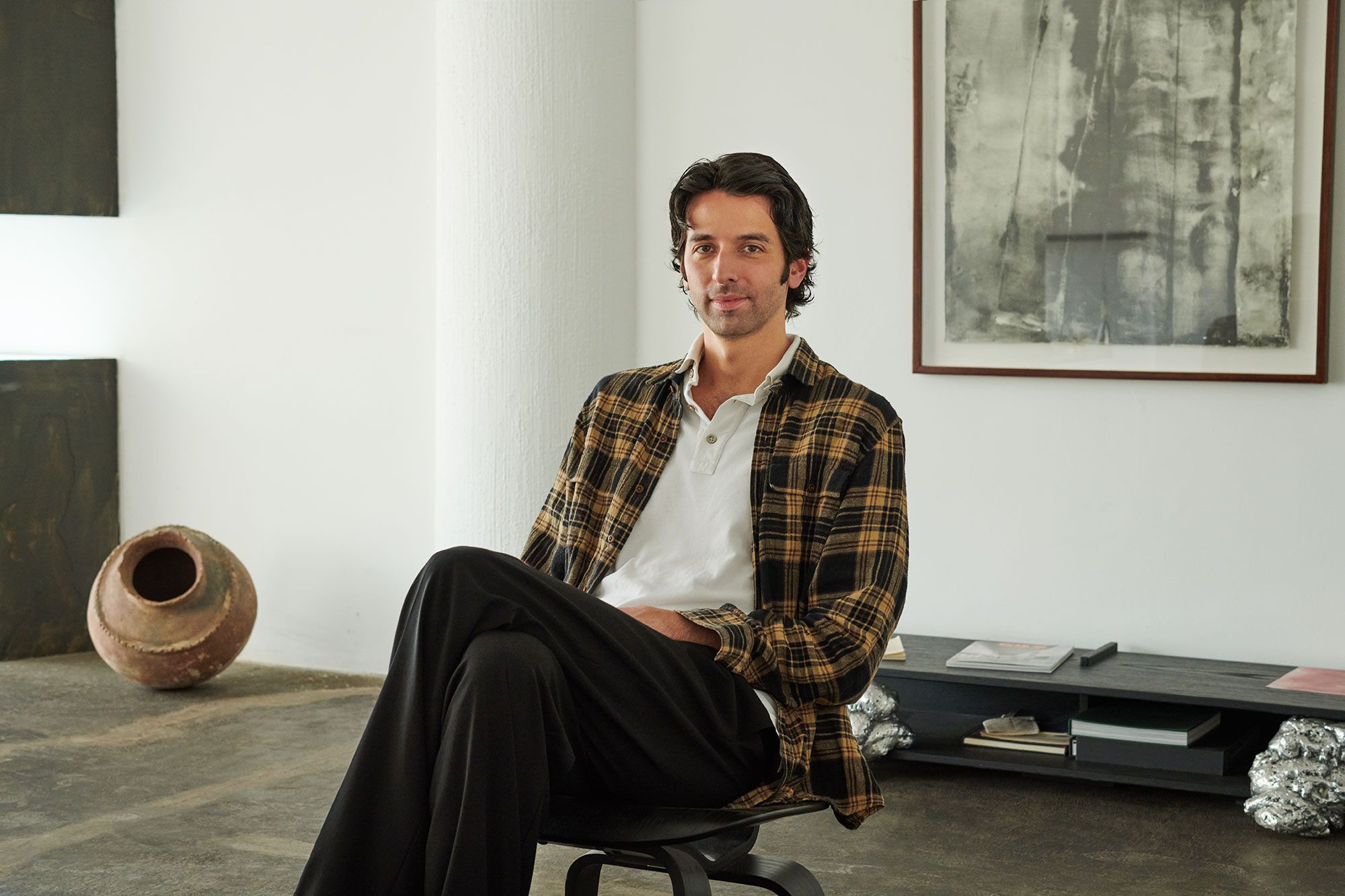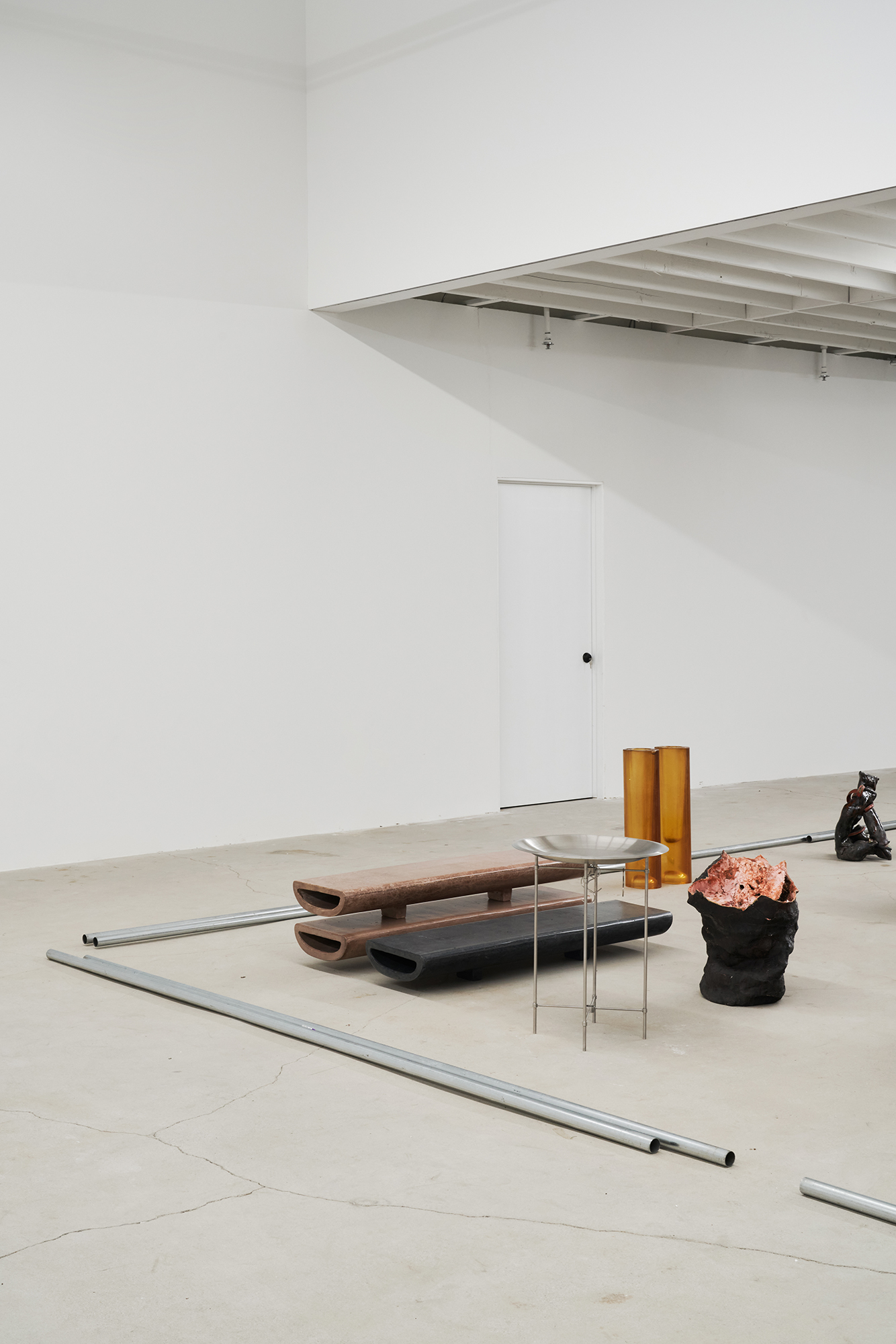Rio estudio: intersection of tangible and ethereal
PRODUCTION: Ademán
product photography:
RIO Estudio
text: Sofia Arredondo

At the intersection of the tangible and the ethereal, RIO Estudio emerges as a space where memory is deconstructed and the unfinished becomes a language of its own. More than an interior design and furniture studio, RIO is a laboratory of exploration, where tradition and transgression coexist in perpetual motion, mirroring the flow of a river. Its aesthetic refuses to be confined by dogma or bound to a canon; it is a living organism that transforms with every piece, every intervention, every nuance of light or scent that inhabits its spaces.
Founded by Patricio Robleda, RIO Estudio is the echo of a restless pursuit that could not be contained within the rigid confines of civil engineering—a precise and binary discipline that, nevertheless, has left an indelible mark on his creative process. His work oscillates between structure and intuition, between the precision of metal and the organic nature of the handmade. The presence of industrial materials such as aluminum and INUX engages in a dialogue with craft, with the imprint of the hand that does not seek perfection but rather expression. The interiority of his designs extends beyond spatial configuration; each object, each lamp, each bench is an inscription of time, a palimpsest where history and imagination converge.
RIO Estudio’s pieces are not mere decorative objects, nor do they conform to an obvious functionality; they are artifacts that inhabit the threshold between the everyday and the dreamlike. The TRUCHA lamp, for instance, inspired by the world of One Hundred Years of Solitude, is a creature suspended between the surreal and the mechanical, with an articulated structure that seems to defy the rigidity of metal. LIQUEN, on the other hand, unfolds like a contemporary ruin where craftsmanship and industry blend into a futuristic language: the handwoven wool from Teotitlán del Valle, Oaxaca, drapes over stainless steel like a second skin, evoking a time when nature and machinery are no longer opposites but extensions of one another.
Beyond form, RIO also designs atmosphere and sensory experience. Its olfactory explorations, materialized in candles and diffusers, reclaim scent as an architectural element: the memory of a space is embedded as much in its lines and textures as in the fragrance that lingers within. In its Design House installation, a glass device inspired by hydraulics transformed engineering into an act of alchemy, where function became poetic and the invisible took on presence.








INTERVIEWER
Egineering and poetic components in your work, and your skill in balancing these two
Patricio
In my three years of engineering all I absorbed were the shapes, the graphs, the materials, the light of the laboratories, the instruments--- they are so beautiful to me. So I like to play with these aesthetic elements of engineering, decontextualize them and mix them together with natural materials like marble or a wool textile. Sometimes with a very specific concept in mind, sometimes only running on intuition.
INTERVIEWER
Smell from your childhood
Patricio
Vetyver. My dad would always wear a vetyver cologne and I especially remember it during trips to the country side. That's why its one of the notes of my first candle; Ocote. The scent is inspired by the trees but also my memories around them.
INTERVIEWER
Your favorite memory from the riverside
Patricio
My favorite memory of a river is in Tuxpan, Veracruz. I would go to there a lot with my cousins and would spend all day in the riverside. A particular memory of a boat ride at night with bioluminesence stands out. It's in this space of my brain where I'm not sure if it's real or a dream, like many early memories. This is the realm where RIO inhabits.
Egineering and poetic components in your work, and your skill in balancing these two
Patricio
In my three years of engineering all I absorbed were the shapes, the graphs, the materials, the light of the laboratories, the instruments--- they are so beautiful to me. So I like to play with these aesthetic elements of engineering, decontextualize them and mix them together with natural materials like marble or a wool textile. Sometimes with a very specific concept in mind, sometimes only running on intuition.
INTERVIEWER
Smell from your childhood
Patricio
Vetyver. My dad would always wear a vetyver cologne and I especially remember it during trips to the country side. That's why its one of the notes of my first candle; Ocote. The scent is inspired by the trees but also my memories around them.
INTERVIEWER
Your favorite memory from the riverside
Patricio
My favorite memory of a river is in Tuxpan, Veracruz. I would go to there a lot with my cousins and would spend all day in the riverside. A particular memory of a boat ride at night with bioluminesence stands out. It's in this space of my brain where I'm not sure if it's real or a dream, like many early memories. This is the realm where RIO inhabits.
In commissioned projects, RIO’s vision unfolds as a network of meanings that transcend the obvious. MURAL N3, for example, is a narrative cast in aluminum that, far from being mere ornamentation, becomes a living system of interwoven references: botanical fragments overlay industrial history, symbolic gestures unravel the relationship between past and future, nature and artifice, permanence and dissolution.
Like a river that is never the same, RIO Estudio moves fluidly between opposites without crystallizing into any single form. Its practice is a continuous exploration of uncertainty, of what is in flux, of what is dissolving. A tension resides in its aesthetic: the structural becomes ephemeral, the ephemeral leaves a trace. In this paradox, in this perpetual transition, lies the essence of its work.
Like a river that is never the same, RIO Estudio moves fluidly between opposites without crystallizing into any single form. Its practice is a continuous exploration of uncertainty, of what is in flux, of what is dissolving. A tension resides in its aesthetic: the structural becomes ephemeral, the ephemeral leaves a trace. In this paradox, in this perpetual transition, lies the essence of its work.